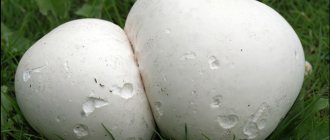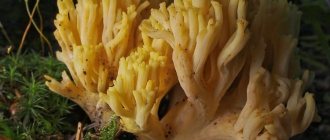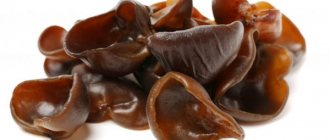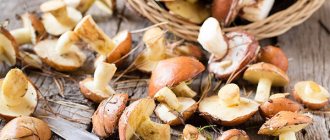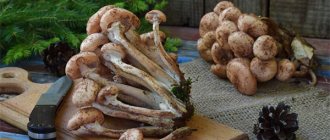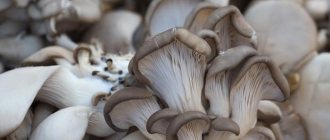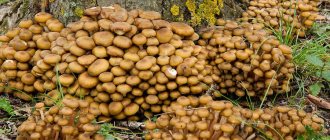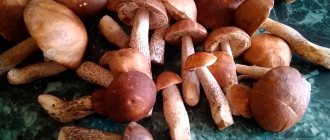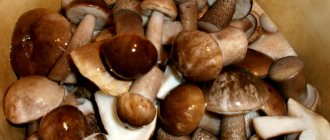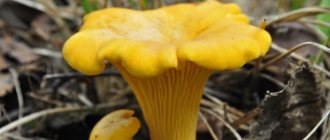In some exotic restaurants you can find such a dish - Korean-style corals. In fact, the main ingredient is not the inhabitants of the sea - it is just an unusual variety of mushroom . The most common name is coral mushroom, but it has many alternatives: ice, snow, royal, gelatinous.
In the East it is called the silver ear . Under natural conditions, it looks like ice among the greenery and is white in color. Previously, only the royal families and some members of the aristocracy of China and Japan could eat these mushrooms. Because of this fact, the product received one of its names.
What it is
Scallops are bivalves that live in all oceans and many seas. They have shells with valves of different shapes and sizes. As a mollusk grows, its shells also grow: additional ribs are added to their surface or existing ones bifurcate.
These are bottom dwellers. Burying in the sand, they filter the water, catching plankton and small crustaceans from it. In one hour, a small scallop (up to 4 cm in diameter) is capable of passing up to 3 liters of water through itself.
The scallop is very mobile. Quickly opening and closing the shell valves, the mollusk moves along the bottom in spasmodic movements, running away from its main enemy - the starfish, or rises from the bottom into the water column.
Inside the shell there is a closing muscle (the actual meat of the mollusk) and a coral - the egg sac. Along the edge of the mantle of the shell, the mollusk has tentacles - organs of touch and about a hundred small eyes that can grow again after loss.
Several types of scallops are of commercial importance: Japanese (the largest), Scottish, Icelandic, coastal, Black Sea, and Chilean red. On an industrial scale, these mollusks are caught in the North, Norwegian, Japanese and other northern seas. Every year, up to 12 million tons of these delicious products are mined around the world.
Scallop: what is it, what does it look like and where is it found?
In appearance it resembles a fan-shaped plate. Often you can see small growths on the shell in the form of spikes and scales. The color range is different and depends on the habitat.
Habitat: Almost all the world's water bodies. On the territory of the Russian Federation, they are mainly found in the Sea of Japan, Bering, Chukotka and Okhotsk. From its habitat it is clear that the scallop prefers cold water and a sandy or rocky bottom. But it can also be found in warmer bodies of water, such as the Black Sea.
Respiration occurs through filamentous gills. Scallops move by swimming movements by flapping their valves, and feed on algae by filtering water. An adult is capable of filtering up to 3 liters of sea liquid in an hour. As a rule, she eats during the daytime and likes to nap at night.
The scallop cannot be called an active inhabitant of the deep sea. A more common occurrence for him is burying himself in mud or sticking to rocks. This behavior can be considered a protective measure in case of danger. Sensitive tentacles allow you to feel even the smallest stimuli. The mollusk spends most of its life at the bottom.
There are more than 250 species in nature. But the most popular are the following:
- Icelandic.
The most sought after species in the fishing industry. Among the representatives there are specimens of large size: shell height - from 15 cm, weight - from 500 g. But the most common are smaller individuals - 8-10 cm with a weight of 100-180 g. As a rule, they move short distances - up to 5 m. Both shell valves are approximately the same size and do not differ by gender. A male can be distinguished from a female only by the color of the gonads (ovaries and testes). In the male it is colored white, and in the female it is orange. Fecundity varies from 500,000 to 5,000,000. The average life cycle is 30 years. Most often, the Icelandic scallop can be found in the waters of the Arctic and North Atlantic. On the territory of Russia they live mainly in the White and Barents Seas at a depth of 5–100 m. - Seaside.
Lives in the waters of the Sea of Japan. The optimal depth for the life of the mollusk is 1–80 m. It prefers places with fast currents and a mixed silty-sandy bottom. Both parts of the shell are different from each other: the lower one is more convex, the upper one, on the contrary, is concave. This structure is due to the fact that the mollusk spends most of its life at the bottom. The life span is quite long and is 15–16 years. Peak growth occurs in spring. Sexual maturity occurs at three years of age. By this age, the shell size reaches approximately 9–10 cm. Spawning occurs in mid-summer. Each female scallop is capable of laying an average of 20–25 million eggs. The most commercially available are biennial mollusks up to 10 cm in size. - Black Sea.
The average length of the shell is 8 cm. The color ranges from white to red-brown. It lives at a depth of 40–60 m. A distinctive feature is its faster pace of movement. Life expectancy is slightly longer than that of its seaside brother, amounting to 18 years. Despite the tasty meat, it has no commercial value, since this species is small in number and small in size.
Chemical composition
Scallop meat is 3/4 water. It is not only an exquisite delicacy, but also a source of easily digestible protein and minerals. The meat of this mollusk contains:
- complete protein - up to 17.5%;
- fats - up to 2%;
- carbohydrates - up to 3%;
- vitamins;
- macro- and microelements.
Shellfish protein is complete.
This means that it contains essential amino acids, which are necessary for humans to build their own protein molecules, but are not synthesized in the human body. Eight amino acids are essential for the adult human body, and two more for the child’s body - arginine and histidine. Essential amino acids
| Name | Content per 100 g, grams |
| Arginine | 0,65-0,7 |
| Valin | 0,38 |
| Histidine | 0,18-0,2 |
| Isoleucine | 0,41 |
| Leucine | 0,72 |
| Lysine | 0,74 |
| Methionine | 0,29 |
| Threonine | 0,37 |
| Tryptophan | 0,1 |
| Phenylalanine | 0,35 |
Scallop fats contain both saturated and unsaturated fatty acids, including omega-3 and omega-6.
The presence of omega acids compensates for the rather high cholesterol content in these mollusks, binding it in the blood and preventing its deposition in the vascular walls. Composition of shellfish meat fats
| Name | Content per 100 g, grams |
| Saturated fatty acids | 0,29 |
| Cholesterol (fatty alcohol) | 0,024 |
| Monounsaturated fatty acids | 0,05 |
| Omega-3 | 0,11 |
| Omega-6 | 0,02 |
There are few carbohydrates in scallops, so its meat can be considered a product for diabetics. The glycemic index of scallop is 0.
Scallop meat is a source of minerals necessary for the normal functioning of the human body.
In terms of iodine content, these shellfish are leaders among seafood. Minerals in scallop meat
| Name | Content per 100 g, milligrams |
| Sodium | 392,0 |
| Phosphorus | 334,0 |
| Potassium | 205,0 |
| Sulfur | 175,0 |
| Chlorine | 165,0 |
| Magnesium | 22,0 |
| Calcium | 6,0 |
| Zinc | 0,91 |
| Iron | 0,38 |
| Iodine | 0,18-0,19 |
| Copper | 0,023 |
| Manganese | 0,017 |
| Selenium | 0,013 |
These mollusks are not far behind in the amount of vitamins they contain.
They contain large quantities of vitamins A, E and group B. Vitamin composition
| Name | Content per 100 g of pulp, milligrams |
| Vitamin A (retinol) | 0,001 |
| Vitamin B1 (thiamine) | 0,007 |
| Vitamin B2 (riboflavin) | 0,015 |
| Vitamin B4 (choline) | 65,0 |
| Vitamin B5 (pantothenic acid) | 0,215 |
| Vitamin B6 (pyridoxine) | 0,073 |
| Vitamin B9 (folic acid) | 0,016 |
| Vitamin B12 (cyanocobalamin) | 0,0014 |
| Vitamin PP (nicotinic acid) | 0,703 |
| Vitamin E (tocopherol) | 0,8-1,1 |
The calorie content of scallops is low and ranges from 88 to 92 kcal per 100 g of shellfish (depending on its type).
Healing properties
The amino acid, fatty and vitamin-mineral composition of scallops determines its healing effect on the organs and tissues of the human body. The meat of these mollusks when eaten frequently:
- has an antiatherosclerotic effect;
- increases the elasticity of vascular walls;
- helps reduce blood pressure;
- exhibits anti-ischemic effect;
- normalizes the functioning of the endocrine and immune systems in the body;
- improves microcirculation in tissues;
- increases the vitality of the body;
- increases stress resistance;
- has a general sedative effect;
- promotes the production of sex hormones.
In addition, the meat of this mollusk has a beneficial effect on metabolism in the human body:
- saturates the blood and thyroid colloid with organic iodine;
- normalizes blood glucose levels;
- improves calcium-phosphorus metabolism in the body;
- reduces the amount of cholesterol in the blood;
- has a positive effect on fat metabolism;
- improves the condition of the skin and its appendages.
The low calorie content and the complete composition of the meat of these mollusks are used in dietetics. Regular consumption of this product has a positive effect on the body of those losing weight while on a diet.
Athletes are advised to consume scallops before competitions because they contain a lot of healthy protein, which contains all the essential amino acids.
The high content of vitamin E in scallop meat has some antitumor effects.
Application and use
Ice mushrooms are used to make antibiotics and antidepressants . The extract promotes the production of antibodies that destroy viruses and bacteria.
Even in ancient times, the product was used as a cosmetic product. Nowadays it is added when making tonics or homemade tinctures.
Medicinal use
Sea scallops improve the health of people suffering from various pathologies, therefore they are recommended for use for:
- atherosclerosis;
- arterial hypertension;
- coronary heart disease;
- sensitivity disorders;
- cerebrovascular disorders;
- diabetes mellitus;
- hypofunction of the thyroid gland;
- rheumatism;
- osteoporosis and osteomalacia;
- obesity.
The peculiarity of these shellfish is that with a sufficiently high protein content in their meat, they do not increase the amount of purine bases in the blood, so they can be eaten even by people suffering from urolithiasis and gout.
It is recommended to include these shellfish in the menu:
- after a long illness;
- in old and senile age;
- weakened;
- pregnant women;
- losing weight;
- children over 7 years old.
In cases of depression and frequent stressful situations, the minerals in scallop meat have an antidepressant and analeptic (mood-enhancing) effect.
Harmful properties
For all their usefulness, scallops can also be dangerous due to some diseases and conditions.
In hyperthyroidism, the iodine contained in the product causes an increase in the production of thyroid hormones, which can lead to a thyrotoxic crisis.
Individual intolerance to the meat of these shellfish is a contraindication to their consumption, because it can cause severe allergic reactions in humans, including anaphylactic shock.
People who have elevated levels of calcium and phosphorus in their blood should not eat scallops.
Like all other seafood, scallops can accumulate mercury in their meat. The mercury content in their meat is much less than, for example, in the meat of octopus, squid, crab or predatory sea fish, but it does contain it. According to the recommendations of Canadian doctors who studied the problem of methylmercury in the meat of crustaceans, shellfish and fish from the seas and oceans, it is not advisable to eat scallops more than 2-3 times a week. In this case, one serving should not weigh more than 150 g.
Possible harm and contraindications
Coral mushroom is prohibited for consumption by the following groups of people:
- Children under 3 years old.
- Pregnant and breastfeeding women.
- People with individual intolerance.
An exotic dish can cause diarrhea, vomiting, and indigestion. The product is contraindicated when using drugs that reduce blood clotting. You should consult your doctor .
Excessive nutrition can cause excess weight gain, despite the dietary composition of mushrooms.
How to choose
Scallops are a very perishable product, so they can rarely be found chilled in stores in countries located far from where these shellfish are caught.
More often, stores sell quick-frozen scallops with shells or pre-cleaned ones. When purchasing a frozen product, preference should be given to shellfish that are peeled and vacuum packed. When peeling scallops, the intestines are also removed along with the shells, which reduces the likelihood of spoilage of the product. Buying shellfish by weight is not a very good option, as they quickly lose moisture, becoming dry and inedible.
The advantages of vacuum packaging of scallops are:
- presence of the original manufacturer's label with the actual date of manufacture;
- preservation of the original appearance and juiciness of the product;
- lack of air space (prevents product spoilage);
- a minimal layer of ice glaze on the product (the amount of balance moisture in the product does not increase);
- protection from foreign odors;
- long shelf life.
Frozen shellfish in vacuum packaging are stored at temperatures from -12°C to -18°C for up to 6 months, while quick-frozen shellfish without vacuum packaging can be stored in the same conditions for no more than 3 months.
Use in cooking
These clams cook very quickly. If you overcook or overcook them, they become rubbery. To preserve all the softness and juiciness of frozen scallops, they need to be defrosted in the refrigerator. If you defrost shellfish in hot water or under the influence of microwaves, you can irreversibly lose the softness and juiciness of their meat.
Only the obturator muscle of the mollusk and its egg sac - coral - are eaten. Coral-based sauces are most often prepared for basting scallop meat.
These mollusks are eaten in different forms:
- raw;
- pickled;
- boiled;
- fried;
- baked;
- stewed.
They are used to prepare first and second courses, and add them to salads and snacks.
The taste of scallops is emphasized by:
- anise and sesame seeds;
- ground black and white pepper;
- lemon;
- olive oil;
- nut oil (walnuts, hazelnuts);
- butter;
- mushrooms;
- onions, especially leeks;
- ham and smoked meats.
Scallops are very popular in French cuisine. They are used to prepare both dishes for daily consumption and exquisite gourmet dishes.
Fried scallops
Best materials of the month
- Coronaviruses: SARS-CoV-2 (COVID-19)
- Antibiotics for the prevention and treatment of COVID-19: how effective are they?
- The most common "office" diseases
- Does vodka kill coronavirus?
- How to stay alive on our roads?
To prepare this dish you will need shellfish meat, refined olive oil, salt and white pepper to taste, and lemon. After defrosting, the scallops need to be dried and lightly salted and peppered. To fry, the frying pan and the oil in it should be very hot in order to “seal” the proteins of the meat with high temperature. Fry the shellfish for 1-2 minutes on each side until golden brown. You can’t fry it longer, otherwise the meat will become rubbery. Before use, add lemon juice to taste.
Creamy scallop soup “Chowder”
To prepare cream soup, you need to take: 600 ml of chicken broth, 1 piece of roots (carrots, celery), 3 medium potatoes, 1 onion, 500 g of champignons, 200 ml of heavy cream, 2 tablespoons of butter, dried herbs , chicken egg yolk, 0.5 cups of white wine, salt and spices to taste. Boil the vegetables and herbs in the broth over medium heat for 10-15 minutes, cool slightly and puree in a blender until smooth. Fry the sliced mushrooms for a couple of minutes along with the scallops in hot butter. At the end, add wine and vegetable puree, simmer over low heat for 10-15 minutes, stirring constantly. Whisk the yolk and heavy cream and add to the soup. Delicious soup is ready!
What is the difference between a scallop and a mussel?
Despite the fact that the scallop, like the mussel, is a bivalve mollusk, both representatives live exclusively in sea waters and are widely used in cooking, they have a number of differences:
- Appearance. If you look at a scallop shell, you can see a characteristic indentation closer to the back. Due to this, there is a similarity with a means for combing hair - a comb. Apparently, this is where the mollusk got its name. In the case of a mussel, the back has an absolutely smooth surface.
- Regardless of the danger, the mussel is always attached, and the scallop is able to swim away, albeit for short distances.
- The shape of the scallop's shell is fan-shaped with rough growths, while that of the mussel is oblong and has no appendages.
- Due to the presence of light-sensitive balls, the scallop, unlike the mussel, is able to respond to the shadow.
- The mussel is considered to be an everyday food product, while the scallop is considered a delicacy.
- Pearl production in scallops can be found more often than in mussels. True, this requires special conditions.
